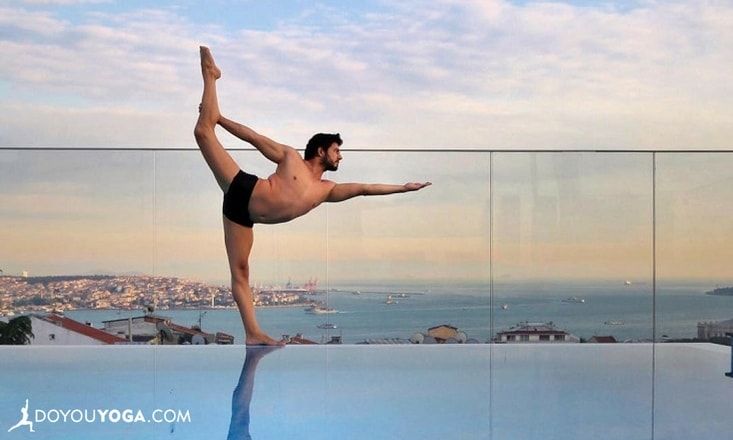Have you ever been told to “find your edge” in your class? If you felt lost or confused by this statement, don’t worry—the “edge” can be hard to describe, and sometimes hard to find. Start exploring what the edge means to you and your practice by reflecting on a few key points.
What is the Edge?
Your edge is the point in the pose when you are mentally and physically challenged, but also able to find balance and ease. The edge embodies a calm challenge, exploring your limits, stepping away from your comfort zone, and cultivating awareness of your mind and body.
The concept of the “edge” has deep roots in yoga and is found across many styles, ranging from vigorous Ashtanga to the slower pace of Yin. In the Yoga Sutras of Patanjali, sutra 2.46 explains that every posture should be stable (sthira) and also comfortable (sukha).
Sthira can also be translated as strong, courageous, or firm—it embodies the challenge of a pose. Sukha can be translated as happy, easy, gentle and agreeable; it embodies the gentle comfort of a pose. When you are exploring your edge, these terms can help us understand the balance between challenge and ease.
Explore Your Edge with Awareness
Think of your edge has having three components: a physical one, a mental one, and a combination of the two. When you are assessing where the edge is, consider where you are physically. You should feel challenged, perhaps getting some shaking in the pose but also not pushing yourself to the point of exhaustion or injury.
Finding your edge mentally involves cultivating your focus and persevering at a challenging and potentially uncomfortable pose. Your mind may be screaming, “I’m tired! Stop!”, but your body is okay. It takes practice to know the difference, but once you are able to decipher between the physical and mental messages of the body, the more you are able to push your edge and advance your yoga practice.
Every Edge is Unique
Every body and mind is unique, and because of this, every edge is unique to the yogi practicing it. When we explore our edge, we are able to redefine what our limits are and harness the growth in in our yoga practice. Finding the edge means stepping outside of your comfort zone, and allowing yourself to explore and grow physically and mentally.
It can be tempting to compare your body and your yoga practice with others’, but this just doesn’t work when it comes to playing your edge. Yoga poses look different for different people. For example, Dancer’s Pose may look effortless to one yogi, and be a struggle for another. Yet both yogis are finding their edge, which is helping them to stay aware and grow.
The Edge Changes
The edge is always changing. It may not be in the same place that you left it, and this is fine. The key is that you are able to recognize it. The edge marks the point of your growth zone, something that can change day to day. Once you push beyond it, you are growing in your yoga practice and pushing past limits.
They key to explore this is to be aware of your mind and body. Your edge also changes in each practice, and it is up to you to develop an awareness to explore it. A familiar pose may feel like a foreign pose one day, and the left and right sides may differ substantially.
Yoga means “union” in Sanskrit, and the edge is, in many ways, the union of what you are capable of now and what you can become. The edge helps you to realize limits you have placed on yourself, and to help you grow beyond. The key is that no one can find your edge for you—you have to explore and find it yourself, every time you are on the mat.
Image credit: Cetin Cetintas


